Figs, agave and even coffee grow at the foot of the snow-capped Khibiny Mountains in the Murmansk Region. And amazingly, all this is growing in the permafrost.
Far away in the north of Russia, in the kingdom of permafrost, where winter arrives as early as September, you can find one of the most incredible and improbable research institutes in the world. The Polar-Alpine Botanical Garden has an enormous collection of local plants, as well as real tropical trees and flowers. How do these plants survive in this harsh climate?

The oldest garden in the Arctic
Only three botanical gardens in the world today are located above the Arctic Circle. The other two are in Norway and Iceland, but Russia’s is the oldest. The Polar-Alpine Botanical Garden-Institute (abbreviated as PABSI in Russian) is located seven kilometers from the town of Kirovsk in the Murmansk Region and was opened on Aug. 26, 1931. It was created based on a project by botanist Nikolai Avrorin, who spent a great deal of time on scientific expeditions, collecting plant specimens in different countries. In the 1960s, he also helped set up a botanical garden in Yakutsk, the largest city built on permafrost. In his articles, Avrorin described the botanical garden on the slopes of the Khibiny as the “northern outpost of Soviet botany.” His main interests were the search for new northern plants and acclimatization of species that are unusual for these latitudes.
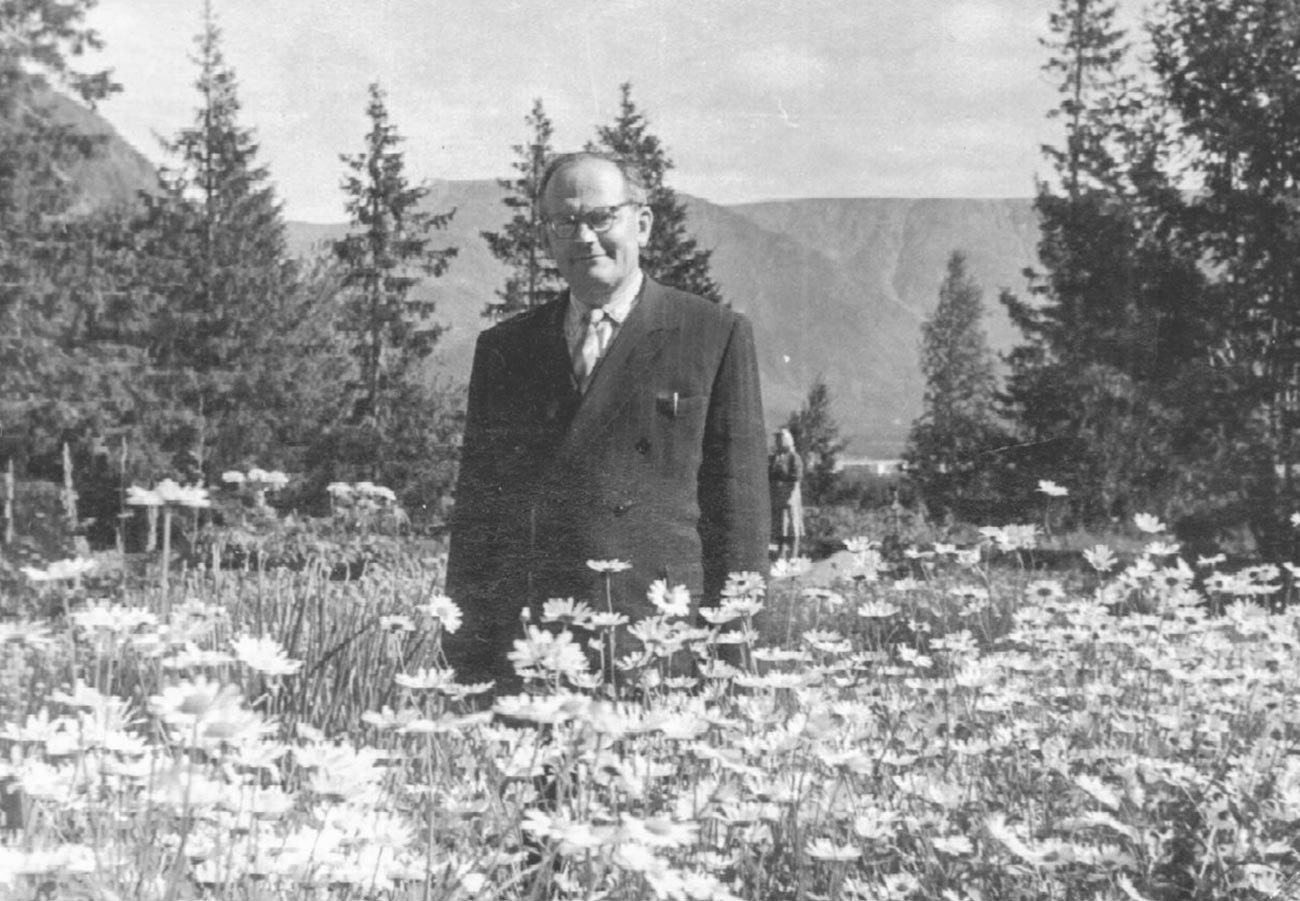
Nikolai Avrorin.
PABSI
Initially, the project seemed like an unrealistic fantasy, but Avrorin managed to get his way and secured funding to purchase prized plants from around the world.
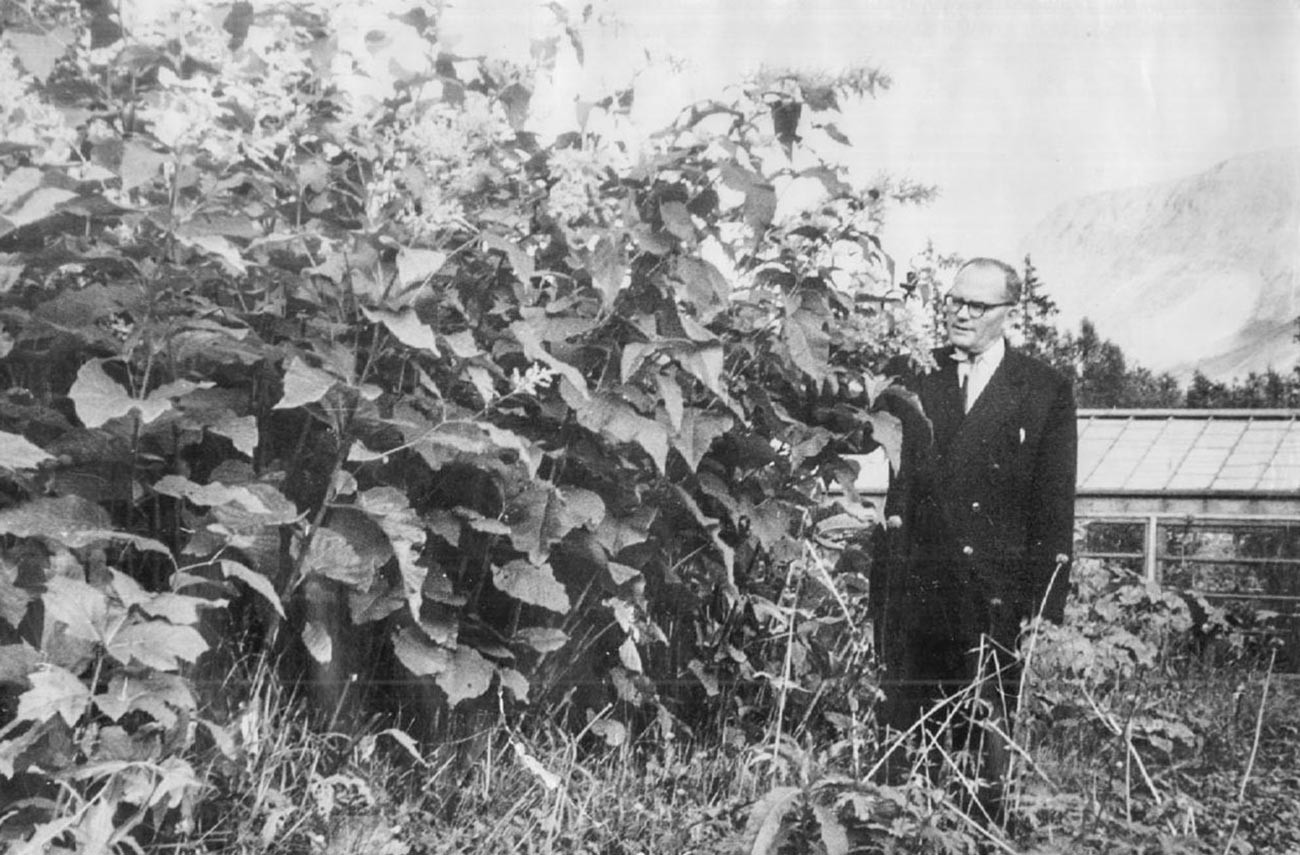
PABSI
The institute’s botanists even continued their work during World War II and grew medicinal plants for Red Army soldiers. The scientists also figured out how to extract glucose from lichens and even set up a small production plant.
A walk in the Khibiny Mountains
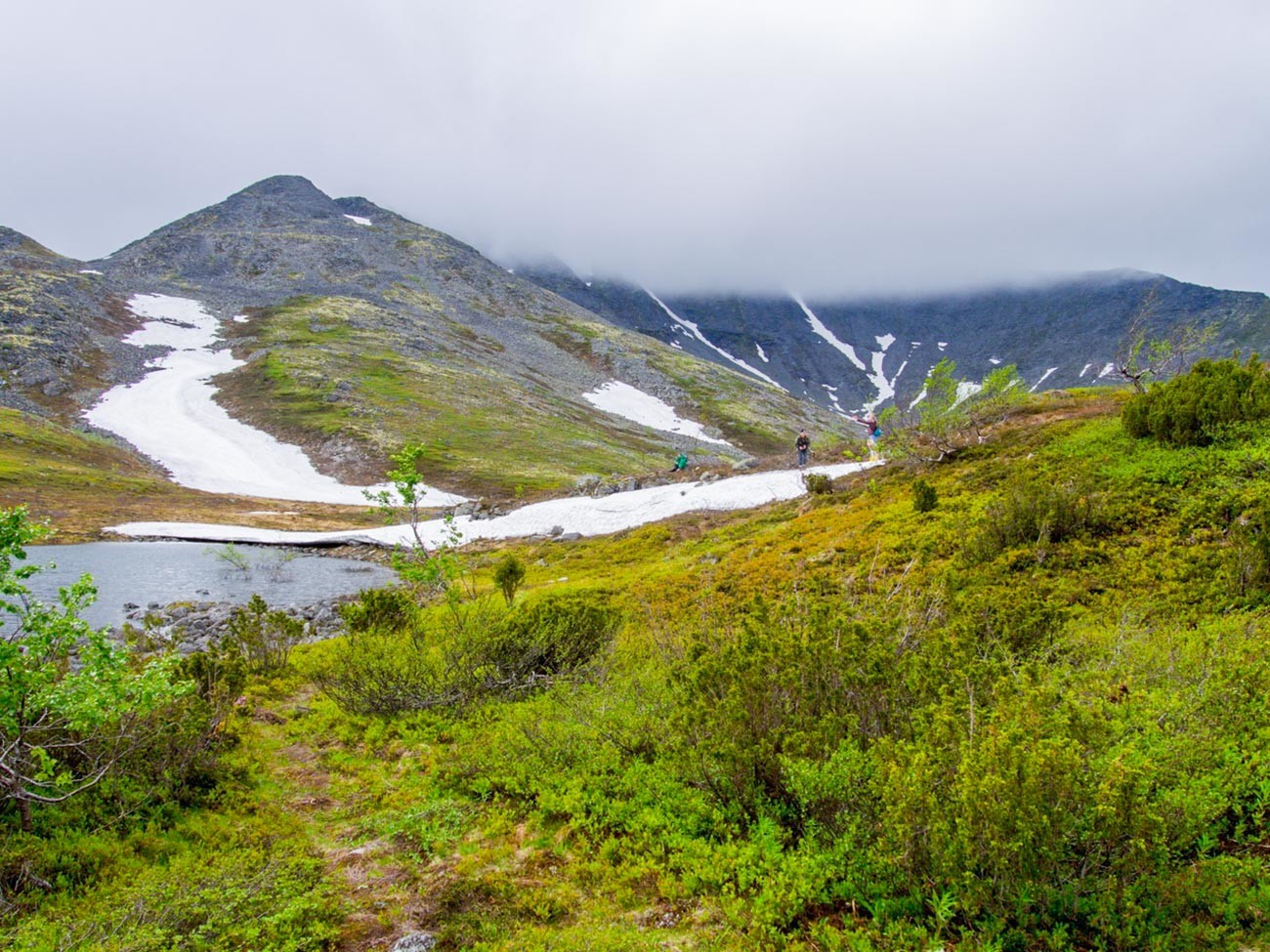
The botanical garden is arranged so that visitors can roam freely and study the plants at various geographical latitudes. Walking along the ecological trail, you can see a remarkable variety of lichens, mosses and Arctic flowers-of which it turns out there are more than 300 species! You can also see, clearly displayed before your eyes, how the tundra becomes a forest tundra and then turns to taiga. The vegetation in the Khibiny is characterized by zonality-the presence of particular plant species at specific altitudes. The higher the zone, the more weird and wonderful plants we’re familiar with become, with tree trunks bent by the wind and rare bushes desperately clinging to the stony ground in a bid for survival.
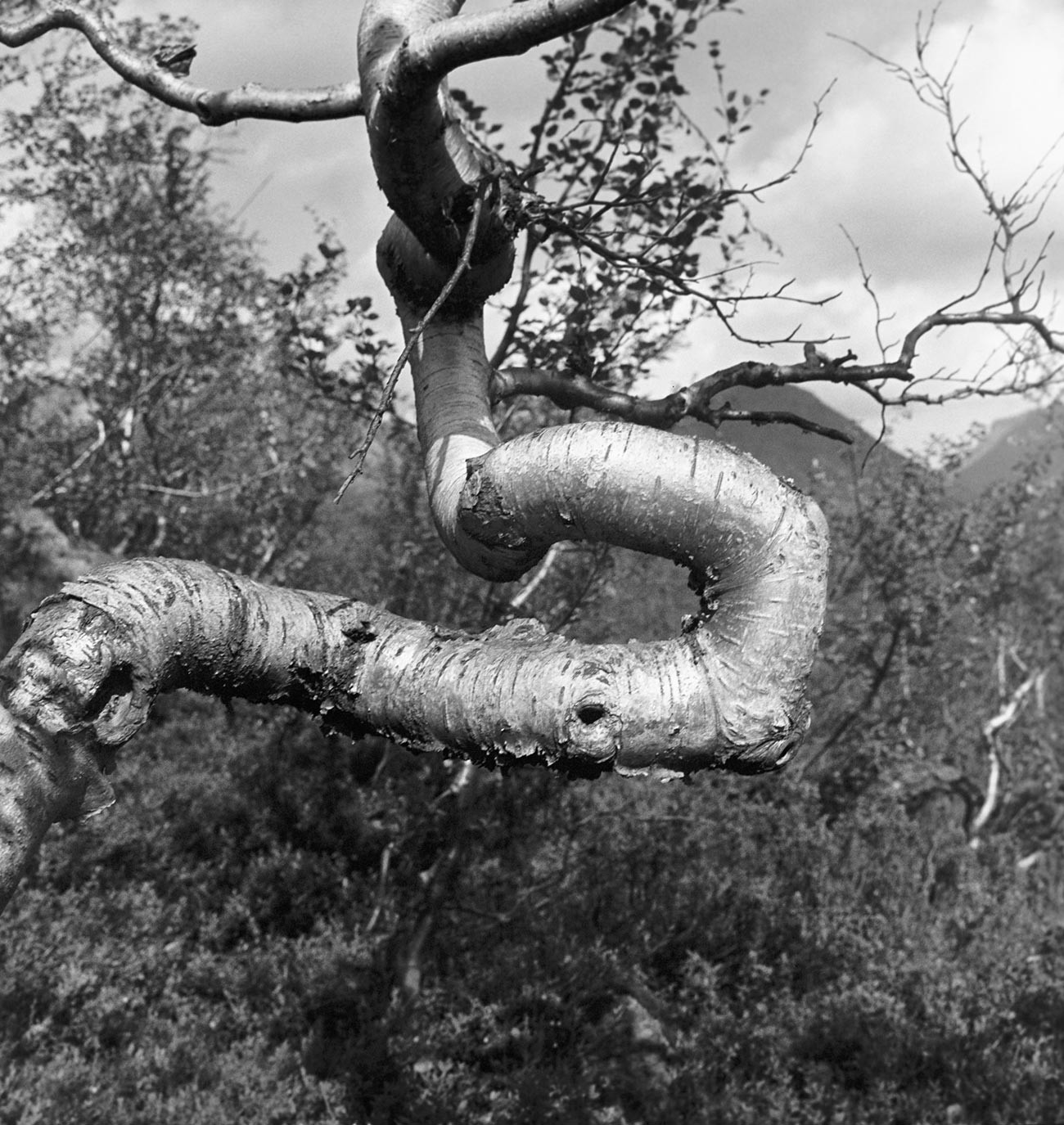
A birch tree, twisted by the northern winds. This photo was taken in Soviet times.
Minkevich/Sputnik
The route starts on the banks of the Vudyavryok River (whose name in the language of the Sami people means “river of the mountain lake”) and then continues along a glacial lake and a mountainside until you reach a viewing platform that offers a stunning view of the city.
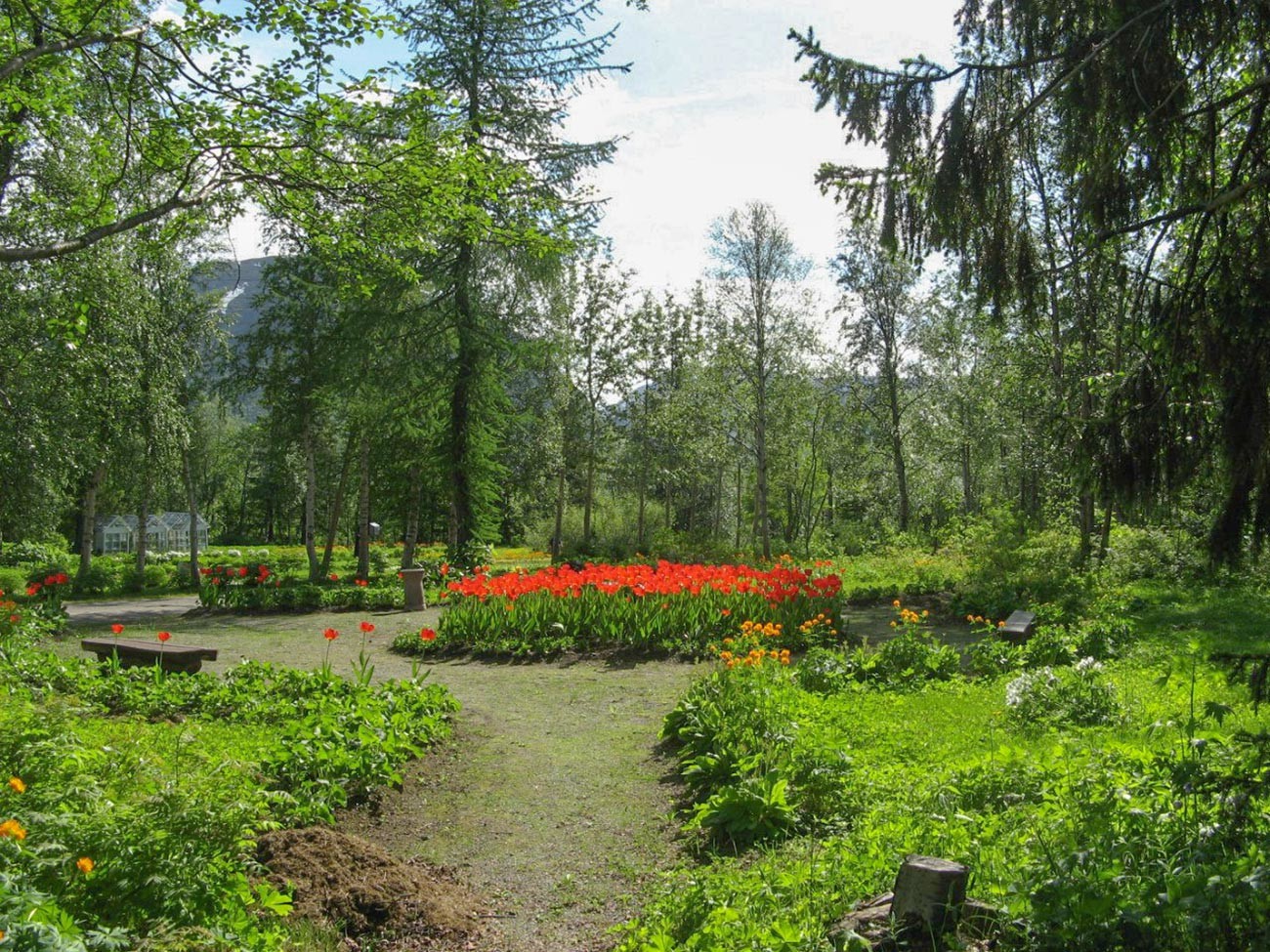
The “Altay” and “Siberia” zones are located separately and include various species of pines that were brought to Kirovsk from elsewhere.
You can find the institute’s arboretum, which has a collection of Alpine species, several kilometers from the botanical garden in the town of Apatity.
During the summer, the grounds of the botanical garden (around 1.6 hectare) are covered with unbelievably beautiful flowers brought from all over the world. The job of the institute’s staff is to “domesticate” these plants so that they are able to grow in the Arctic.
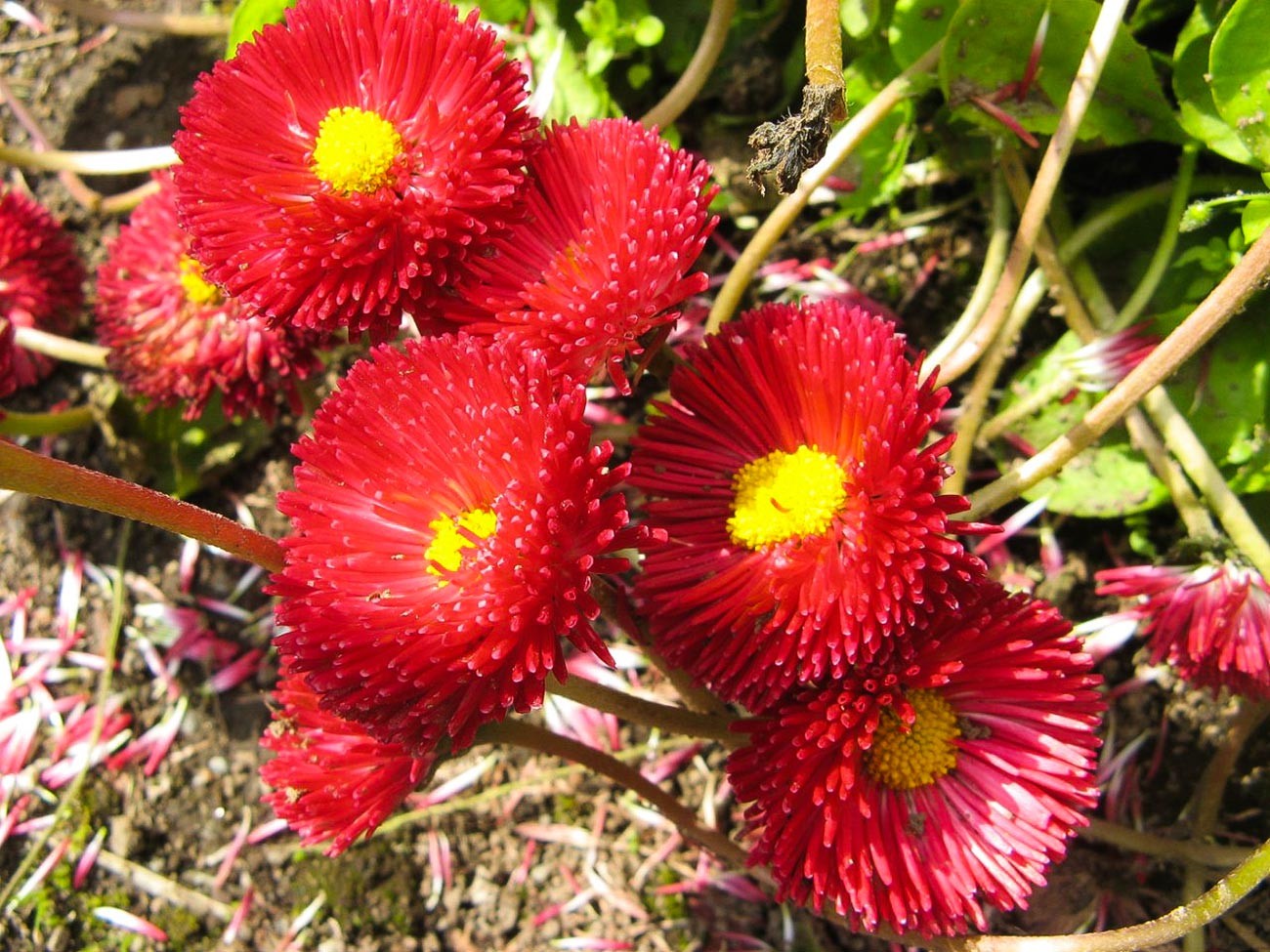
“Residents of the Murmansk Region’s towns rarely notice that some of the trees, shrubs and flowerbeds with beautifully-flowering perennials that they see around them are not native to the region,” two of the institute’s scientists write. “Our parks, squares and avenues are the graphic result of many years of work by PABSI to add greenery to the urban landscape. Almost all the species and cultivars that were planted here as far back as Soviet times were brought to the botanical garden from more southern areas and underwent many years of acclimatization.”
The botanists in Kirovsk are constantly looking for new species of plants, mainly in the northern latitudes of Karelia, Siberia, the Urals and the Far East.
Finding the tropics in the Arctic
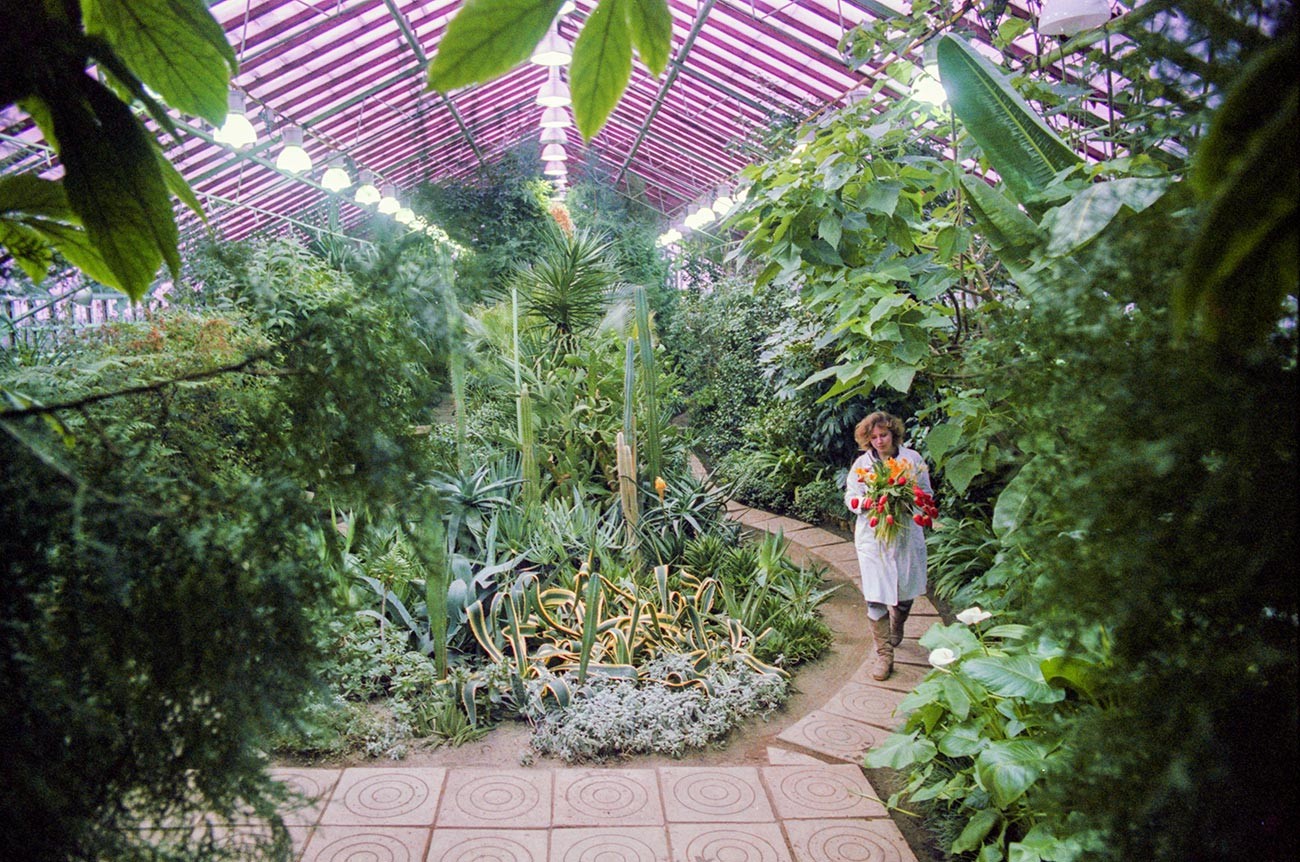
Many plants in this hothouse have been cultivated since Soviet times.
Semyon Maisterman, Anatoly Morkovkin/TASS
While visiting the botanical garden, you can also immerse yourself in an authentically tropical environment in the form of hothouses where plants that are exotic for this region happily flourish. Just imagine the effort required to cultivate plants used to warm and sunny conditions way up in the Arctic! They require extended daylight, protection from polar nights, fertile soil instead of permafrost and, of course, carefully regulated temperature and humidity levels.
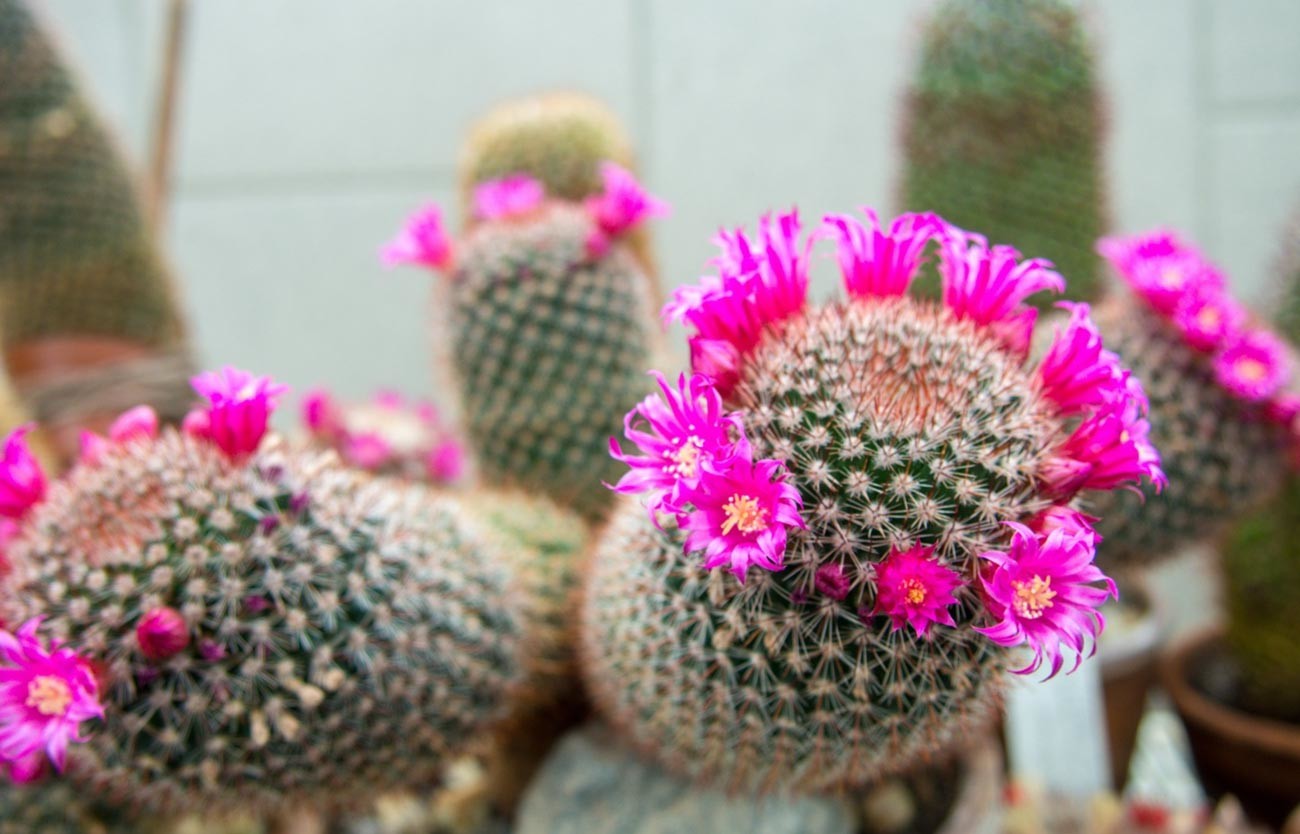
The garden currently has more than 700 plant species that were brought from warmer countries. They are arranged according to four climate zones: African, American, Mediterranean and Asian. The Mexican agave, the African crinum lily, the date palm and large tropical ferns and cacti grow in Kirovsk. There is even an Arabica coffee tree that produces coffee beans!
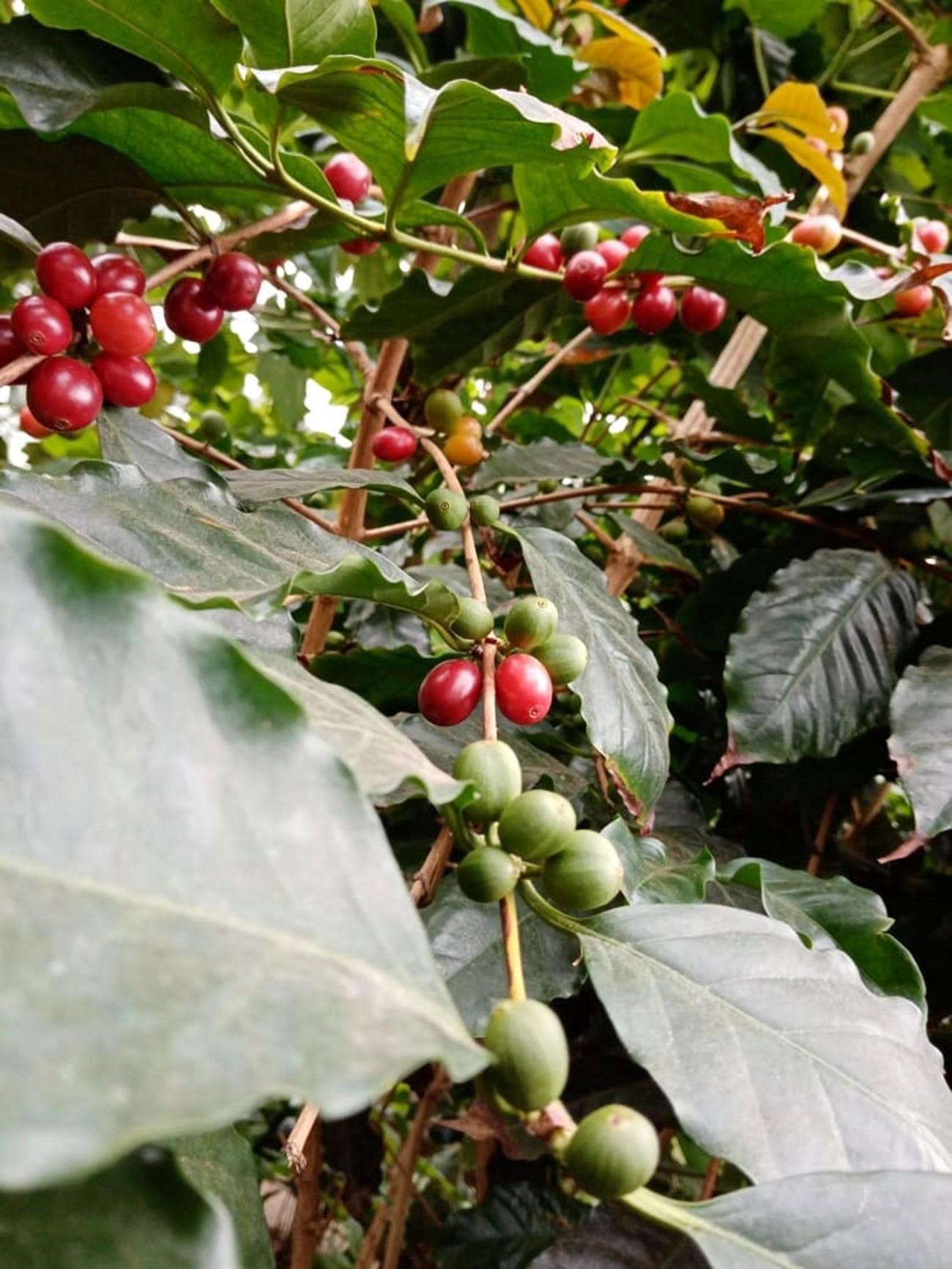
This coffee tree has been cultivated since 1966!






